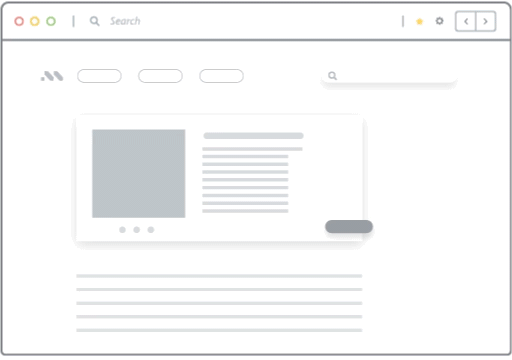What Is Blended Learning? (+Types, Benefits, Examples)
- Published: November 25, 2022
- Updated: March 20, 2024


As technology continues to evolve and impacts all aspects of our daily lives, learning and education of these new technologies cannot be overlooked. It’s important to remember that “evolving” refers to moving ahead to the next level without decimating the old, i.e., taking advantage of both worlds – the positives of the old with the advantages of the new. In the case of education, this is known as blended learning.
The concept of blended learning has gained great popularity over the last few years, with its advantages being lauded by learning professionals. Blended learning combines the benefits of traditional classroom teaching with emerging technology to make learning more real-time, contextual, and engaging.
Let’s delve deeper into what blended learning is, and highlight different models and benefits it offers.
What Is Blended Learning?
Blended learning combines the best of two training environments – traditional face-to-face learning and eLearning – to meet the evolving needs of modern learners.
Blended learning takes learning outside the walls of the classroom, making it possible to access resources both online and offline. This helps engage all types of learners – both those who learn better in a traditional classroom environment as well as those who work best with semi-autonomous, computer-based training.
While classroom learning offers an opportunity for immediate face-to-face interaction, online learning offers self-paced learning with interactive media such as games, videos, tutorials, quizzes, etc. all accessible from the learner’s home page in a learning management system (LMS).
Types of Blended Learning Models
Here are the five most common types of blended learning frameworks:

In the flipped model, traditional classroom instruction is inverted. Learners first encounter the instructional content outside of class, typically through video lectures, readings, or online modules. Then, in-class time is dedicated to active learning activities, discussions, group projects, and exercises that reinforce and apply the pre-learned material.
The flipped model allows for more personalized and interactive learning during face-to-face sessions and provides students with the flexibility to learn at their own pace.
The face-to-face driver blended learning model is the closest to traditional classroom training, as most of the training takes place in a classroom setting under the guidance of an instructor. This approach offers individual, personalized support to learners who are struggling to grab the new concepts or are falling behind the training curriculum.
In the rotational model, learners rotate between different learning modalities, such as face-to-face instruction, online activities, small-group discussions, and independent study. These rotations can be on a fixed schedule (e.g., daily or weekly) or based on learners’ progress. It offers flexibility and caters to various learning styles, allowing employees to work in the modality that best suits their needs at a particular time.
The flex model provides learners with significant autonomy and control over their learning path. It combines online learning with in-person support as needed. Using an adaptive learning platform, learners have the flexibility to choose when and where they access online content and resources, making it suitable for self-paced learning. Instructors are available to assist learners when required, helping them navigate through the material and address any challenges.
The enriched virtual model is primarily an online learning experience with periodic face-to-face sessions. Most of the learning occurs in a virtual environment, but learners attend physical classes, or workshops at designated times for hands-on activities, assessments, or collaborative projects.
This model combines the flexibility of online learning with the benefits of in-person interaction, ensuring learners receive both individualized instruction and opportunities for group engagement.
Benefits of Blended Learning
While there are many student and learner benefits of implementing a blended learning model, here are seven of the most impactful benefits.
A mixture of both offline and online training approaches give you the best of both strategies. Blended learning is quite flexible and adaptable as compared to a single-method approach. It takes every type of learner into account, whether they prefer the traditional classroom, online sessions, or a mixture of both, meaning no student is left behind.
The right blended learning model helps you break the monotony of corporate training, and achieve higher employee engagement levels through a plethora of training modes including multimedia, presentations, instructor-led training, classroom workshops, real-life projects, etc. A blended approach to learning also follows the 70-20-10 model by allowing learners to gain knowledge through experiences and formal training material.
Blended learning helps you reduce your training costs as fewer trainers for less time, means fewer expenses for travel and accommodation. Furthermore, it helps to reduce the number of man-hours spent on traveling, resulting in a significant increase in productivity.
Of course, online training is not free of charge as it requires multiple resources and skilled training facilitators to develop high-quality remote training content. However, you can keep its cost at low levels by opting for many free educational technologies available today.
All in all, the blended learning approach can significantly increase your corporate training’s ROI by reducing traditional training costs and improving employee productivity.
Feedback from employees is used as an indication of their performance levels. But the traditional training methods make it challenging for organizations to collect employee feedback regularly. The self-reporting surveys are unreliable most of the time, which might affect the quality of employees’ performance within an organization.
An effective blended learning platform lets employees track their performance via periodic online quizzes and tests and saves you valuable time spent in collecting training feedback in a physical environment. Online blended learning platforms can help track the time taken by an employee to complete a task, the number of times they take a lesson, and the efficacy of blended learning.
Furthermore, the collaboration of multiple learning modules makes it easier for organizations to monitor and measure the effectiveness of their blended training program. The division in modules will help you collect employee feedback in small chunks that are frictionless and not intrusive.
A successful training plan is one that can work with every individual’s schedule. The training program should be available whenever an employee is ready to learn.
An effective blended learning platform leaves no employee behind as it allows every employee to move through the online portion of the program at their own pace and ask queries in person during live meetings. It’s a win-win for balancing busy schedules, employee preferences, and pace of learning.
Training via a blended learning approach makes your employees more active and helps them develop critical thinking because of face-to-face and technology-enhanced approaches.
Combining instructor-led training with online courses offers a unique opportunity to customize training to meet employees exactly where they are in terms of skills and knowledge.
Blended learning allows organizations to set up multiple channels that cater to every employee’s learning style and demands. Information in customized training programs can be presented in different formats, based on an employee’s learning preferences and goals.
The tailor-made learning program enables employees to find information through online resources, webinars, ebooks, etc. With such an approach, learners can experience the advantages of a traditional classroom, along with the flexibility of eLearning.
Is the online lecture moving too fast? Hit pause. Having trouble understanding a particular concept? Discuss in the face-to-face session. Whatever your employees’ needs are, blended learning is flexible enough to meet them.
As discussed in the previous point, blended learning gives learners the freedom to learn at their own pace, in the comfort of their own space offering them great flexibility in learning. Also, blended learning adds the much-needed warmth of human interaction that enables learners to interact with a subject expert to clarify their doubts before they could affect their progress.
A blended learning approach helps ensure that you reach all of your employees, whether they are visual, auditory, or kinesthetic learners. It only makes sense that reinforcing training by activating more senses helps retain information longer than in a traditional approach.
How To Create a Blended Learning Program
Here’s how you can create an effective blended learning program for your organization.
Begin by clearly defining the training objectives. This step is foundational as it sets the direction for your entire blended learning program. Training goals must be specific, measurable, achievable, relevant, and time-bound (SMART goals). Consider what skills, knowledge, or competencies learners need to acquire or improve upon. Define the desired outcomes and what success looks like for your program.
The choice of a blended learning model depends on various factors, including the nature of your training objectives, the target audience, available resources, and logistical considerations. Each model offers a different mix of online and in-person components, such as the flipped model, face-to-face driver model, rotational model, flex model, or enriched virtual model. Carefully assess your specific needs and constraints to determine which model best aligns with your training goals.
Organizations need to invest in online course authoring tools and employee training software to create a relevant training program for modern learners:
- Digital Adoption Platform: A digital adoption platform (DAP) is a training solution that integrates with digital tools to provide automated, personalized training in the flow of work. DAPs assign each learner a contextual task list containing interactive walkthroughs and other in-app content based on the learner’s profile. Walkthroughs are a series of step-by-step prompts that show users how to complete a certain process by guiding them through each step, showing them relevant training videos, or providing informative articles. DAPs work hand-in-hand with learning management systems (LMSs) and eLearning software like xAPI and SCORM for you to track learners’ progress and build more relevant content in the future.

Request a demo to see how Whatfix empowers organizations to improve end-user adoption and provide on-demand customer support
- Learning Management System: LMS provides personalized learning paths for training courses based on the employee’s actions taken within the LMS. Corporate LMS solutions track what courses your employees commonly access and complete within the LMS database, as well as suggest similar courses that the employee might be interested in. It’s a completely automated process that requires little time investment from your L&D team outside of the initial setup and content creation.
Develop assessment methods and evaluation criteria that align with your training objectives. These assessments should measure learners’ progress and the achievement of specific learning outcomes. Consider using a variety of assessment types, such as quizzes, assignments, tests, peer evaluations, and practical demonstrations. Define clear grading criteria and performance standards.
Gather feedback from both learners and instructors throughout the duration of the program. Collect feedback on the content, training delivery methods, engagement levels, and overall learning experience. Use surveys, assessments, focus groups, and one-on-one discussions to gather qualitative and quantitative data. Analyze this feedback to identify areas of improvement and make iterative adjustments to enhance the program’s effectiveness.
Real-Life Examples of Corporate Blended Learning
Here are three examples of how enterprise companies are using blended learning to improve their employee training and development programs.
Intel prides itself on its record of minimal product defects and utilizes thousands of manufacturing technicians to operate its factories. These technicians are responsible for operating, performing preventative maintenance, and troubleshooting equipment. This requires Intel to focus on hiring technicians with some core technical competencies. But these competencies of technicians vary by site and geographic location.
This required the company to implement a training solution that could connect across locations and experience levels with minimal time investment. Hence, they implemented a performer-centric blended learning approach that combined digital simulations, scenarios, and interactive exercises to achieve higher retention rates amongst the employees. This approach enabled workers to quickly learn new skills using a combination of experiential learning and self-paced learning, supported by collaborative and instructor-led models. The training was conducted over two weeks resulting in a 157% ROI with a benefits-to-cost ratio of 2.27.
Source – CGS Blog
A contract research organization that offers clinical trial services for pharmaceutical companies had a mission to be involved in groundbreaking research to develop new and innovative medicines and make them available to patients quickly.
Their training department structured the Instructor-led onboarding training to introduce the new hires to different functional departments in the organization and then train them on how to access and navigate the corporate LMS. Also, online training had to be provided to Clinical Data Management professionals on writing effective queries and using software tools for status tracking and discrepancy management.
One of the main challenges faced by the company in training delivery was meeting timelines. Because their client had a training schedule ready for the onboarding program, the training material of 14+ hours had to be ready for rollout in a span of 6 to 7 weeks.
The company leveraged a blended learning strategy to make use of classroom training, eLearning, videos, job-aids, and worksheets. While ILT sessions ensured new hires got to interact with their peers, e-learning delivered role-specific training on tools required to be used by Clinical Data Management professionals.
The blended learning strategy helped them by drastically cutting down the time new hires spent in classroom training, addressing diverse learning styles, leveraging technology for rapid upskilling of new hires.
Source – CommLab
The Boeing Company wanted to improve its capture team leader (CTL) training to reflect the work that the business development role performs in the organization. In addition to better preparing participants for the CTL role, they wanted to reduce the classroom time and also the dependency on experienced CTLs.
The company opted for a blended learning solution that included small, web-based training lessons. This curriculum allowed employees to gain a foundational knowledge of the CTL role, its responsibilities, and the tools they needed. It also enabled them to practice the skills of a CTL before attending the live session and this preparation came in handy when the participants came to the classroom session. Throughout the classroom-based learning, participants were walked through the phases of a real capture effort using the knowledge and assignments they completed in the pre-classroom online learning.
The outcome was that 82.5% of the respondents felt they could immediately use the course content on the job, and 100% responded that they would recommend the course to a colleague.
Source – Training industry
Blended learning for corporate training is not only cost-effective but also a more natural way to learn. If you need just one word to describe using blended learning for corporate training, it is “flexibility”.
To boost the effectiveness of your blended learning programs, implement digital adoption platforms such as Whatfix, that provide a centralized and user-friendly environment for learners to access and interact with various digital tools and resources. They help streamline the integration of online components within a blended learning program, offering a cohesive experience.
DAPs provide step-by-step guidance, interactive tutorials, and in-app support, which can be especially valuable for learners navigating online content. This technology enhances learner autonomy and engagement, allowing them to make the most of online resources while seamlessly transitioning between in-person and digital learning components. Additionally, DAPs offer analytics and insights that educators can use to assess learner progress, identify areas for improvement, and tailor the blended learning experience for better outcomes.
To learn more about Whatfix training, schedule a free demo with us today!
Request a demo to see how Whatfix empowers organizations to improve end-user adoption and provide on-demand customer support


